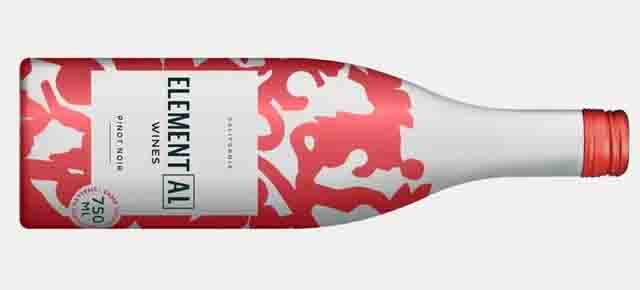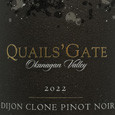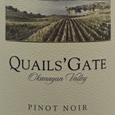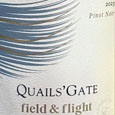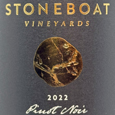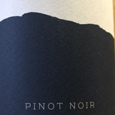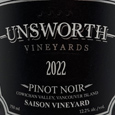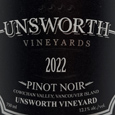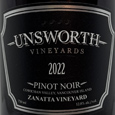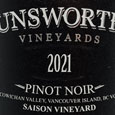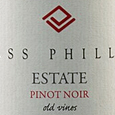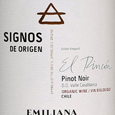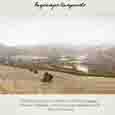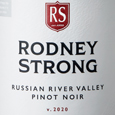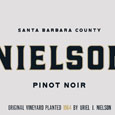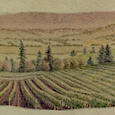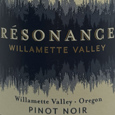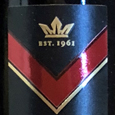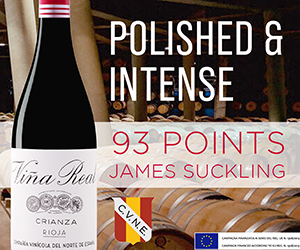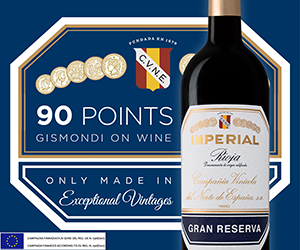The 2025 Vancouver International Wine Festival was a signal opportunity to sample a gallery of pinot noirs from the New World part of the pinot noir spectrum. A good portion of the pinot noir's flavour spectrum and its responsiveness to terroir were clearly on display.
Unfortunately, the US West Coast was the featured country planned nearly a year before the current trade war. While the wines have been temporarily pulled from the shelves of government stores, we tasted several just before the tariff turbulence. In fairness to the wineries, we report our findings should sanity prevail and the wines return to the shelves later this year. It was an excellent opportunity to compare examples of pinots from various locations and styles up and down the West Coast, including Vancouver Island, California, Oregon and British Columbia, which were rounded out with quality pinot noirs from Australia, Chile, and New Zealand. Highlighted are some of the more noteworthy wines, wineries, and terroirs, along with some earlier reviews from the GOW
British Columbia / Okanagan Valley
With their first pinot noir released in 1989, Quails' Gate Winery is the first pinot noir producer of the modern (vinifera) era in British Columbia. They also have the oldest pinot noir vineyard in B.C., a ¼ acre plot planted in 1975. Situated on the slopes of Mount Boucherie, their original vineyard was purchased in 1956. Their regular pinot noir and Stewart Family Reserve have now been made for over thirty-five vintages. They have also produced various limited releases of pinot noirs based on Dijon clones and a Richard's Block pinot noir to honour the winery's founder. The senior winemaker is Jeff Del Nin. The West Kelowna part of the Okanagan region is warmer and more arid than Napa Valley, with nearly two hours more sunlight per day during peak growing season. Daytime temperatures reach 104ºF (40ºC), but the cool nights allow the grapes to maintain their natural acidity – a signature trait in B.C. wine. The estate vineyards are certified by Sustainable Winegrowing BC.
Pinot noir does not generally show its best in the South Okanagan Valley, usually defined as the section South of Okanagan Falls. The intense heat and relatively high number of growing degree days are a good fit for grape varieties needing intensification, like cabernet sauvignon and syrah. Still, pinot noir, preferring a cooler climate, mostly becomes denser, less expressive and cheerless versus its usual spritely self. The Stoneboat Vineyards reserve pinot noir is one of the few exceptions in the region. The winery is located on the East side of the Valley in the Black Sage Bench area of the South Okanagan, sometimes called a 'pocket desert' because of the abundant sunshine and low rainfall. Initially founded by the Martiniuk family and opened in 2007, the Stoneboat home vineyard sits on an exceptional terroir called the Black Sage Gravelbar. The deeper soils there contain rounded stones frosted with a coating of calcium and other minerals, known as carbonate skins. During a visit, Pedro Parra, an international terroir consultant, confirmed that some of the world's great wines are grown upon similar rocks. Stoneboat Vineyards' pinot noirs show flavours of black tea, dried cherry and baking spice. Still, they are also always enlivened by an unmistakable current of minerality from the presence of limestone that gives them lift and interest.
British Columbia / Cowichan Valley
The 350 square kilometre Cowichan Valley Sub-GI surrounds the city of Duncan and sits not far from the Salish Sea in the Southeast corner of Vancouver Island, one degree south of the Canada/US border. The climate is classified as maritime Mediterranean. It sits in the shadow of the Vancouver Island Range, one of the protective necklaces of mountains running along the island's center. The vineyards range in elevation up to about 250 meters. Though a decidedly cool climate, the average temperature in the Cowichan Valley is one of the highest in Canada. It has a long frost-free growing season, and the rain that does fall is mainly in Winter. The Cowichan Valley was the first region outside the Okanagan Valley to be recognized as a sub-GI in June 2020.
Australia
Bass Phillip Estate Pinot Noir 2021
Australia doesn't usually come to mind regarding top-quality pinot noir. The Australian climate, which is overwhelmingly hot and dry, is not pinot noir's natural home. Indeed, pinot noir only accounts for about three percent of Australia's wine output. However, in the more temperate South of the continent, there are favourable areas, such as the Mornington Peninsula and Tasmania, where pinot noir can produce top-quality wines. One of these blessed locations is South Gippsland, a subregion of the Gippsland wine region in Victoria State that includes the Southernmost area of the Australian mainland. Directly North of Tasmania, separated by the Bass Strait, the region experiences significant variance in daily temperature throughout the year, from near freezing in the Winter to 35 degrees Celsius in the Summer. In the growing season, high humidity and cool, late afternoon air flows provide a combination of continental and maritime climatic conditions that make parts favourable for pinot noir. The region's rolling hills and valleys and variations in mineral-rich soils create a landscape with relatively diffuse pinot noir terroirs, unlike the bands of pinot noir vineyards found in other pinot noir areas.
Chile
The Casablanca Valley, located in the northern part of Chile, 100 kilometres North-West of Santiago, benefits from its relative proximity both to the equator and to the cooling influence of the Humboldt Current that flows up the West coast of Chile from the Antarctic. The East-West-oriented valley is roughly 30 km long and sits 26 kilometres from the Pacific. The ocean's influence brings the region cool morning wind, fog and cloud cover. The Emiliana winery was founded at the end of the 1990s by Rafael and José Guilisasti, who, over time, converted a conventional Chilean winery into a 100% organic and biodynamic winery.
United States
California
Bogle has taken a bold step to evolve sustainability in the wine business by introducing what they say is the first-of-its-kind shatterproof, recyclable aluminum wine bottle that is 80% lighter than glass. They brought their pinot noir from this new line called Elemental, drawn from selected sites across California. The bottle has an eye-popping graphic design, and the wine is certified sustainable, vegan-friendly, and gluten-free. It was one of the better pinot noirs in the show.
The Arroyo Seco American Viticultural Area (AVA) is located at the upper end of the Salinas Valley in Monterey County. It adjoins the larger and better-known Santa Lucia Highlands. The valley's opening sits opposite a deep ocean feature known as the "blue grand canyon," which typically contains icy water currents. The result is a unique ocean presence that provides fog and cooling winds far up the valley. Added to this are shady canyons and a North/South orientation, and the result is that though the AVA is arid and resides in a warm latitude, Arroyo Seco's pinot noirs are medium-bodied, balanced, supple and precise with good intensity of flavour.
Anderson Valley lies in Mendocino County, just North of Sonoma County. The county extends about 120 kilometres along the coast and reaches 60 kilometres inland. Anderson Valley sits inland, parallel to the Pacific, for about 30 kilometres. If you are travelling on the coast road, access from either North or South involves driving through a heavily wooded mountain pass, so the area is relatively isolated. So few will end up there by accident. The valley sides are relatively steep, and though mountains separate it from the ocean, fog rolls in dependably from the North most mornings via a network of East/West valleys in a graduated way, and this fills much of Anderson Valley for a portion of the day, creating a fog line part way up the valley sides. The cooling and shading effect of the fog is such that pinot gris, riesling and pinot noir are grown very successfully below the fog line and fully ripened zinfandel thrives above it. The stacked factors of fog and altitude, along with East and West-facing slopes, create an advantageous matrix of terroirs for pinot noir.
Though there is a wide range of possible styles, Anderson Valley pinots tend to be on the lighter, balanced, supple side, but they are informed by altitude and slope to add some riper intensity. Fruit profiles can range from red to blue to lighter black fruits. Alcohol levels tend to be restrained, and the effects of fog and shadow keep the acidity buoyant. The resulting pinot noirs showing focused fruit, full ripeness and supportive acidity are akin in some ways to those of Oregon and British Columbia.
Los Carneros AVA covers parts of Sonoma County and the low hills that flank Southern Napa Valley. AKA "Carneros," both are legally acceptable and appear interchangeably on wine labels. Similar to other California regions known for producing well-noted and elaborated pinot noir, a cooler climate influenced by proximity to the ocean, wind, fog or all three has made Los Carneros an area where the grape can produce distinctive wines. In this case, the nearby presence of Pablo Bay, just North of San Francisco, is the source of marine fog and breezes favourably moderate the California sun and heat. Cooler than Napa but warmer than the Sonoma Coast, the wines have intensity and richness but retain a balanced profile.
The Russian River Valley is situated in the Northern portion of Sonoma County, much farther from Pablo Bay than Carneros but much closer (16 kilometres) to the open ocean. A wide corridor from the valley to the sea, called the Petaluma Gap, pulls morning fog that parks in banks into the Russian River to cool the vineyards and again provide a place where pinot noir can thrive. The fog makes for a substantial diurnal temperature range of 20 °C that helps the vines retain acidity, makes for a long, slow ripening period, and ultimately provides balance in the wines. The interplay of wind, fog, hills, soils, elevation and sun in the Russian River is such that six distinct "neighbourhoods" were identified that show consistent combinations of flavour characteristics from vintage to vintage. Russian River wines show some of the most intense and varied flavours and aromas for pinot noir in California, yet they retain balance, floralness, suppleness, and complexity.
Oregon
It's always interesting to taste a winery's newly released wines to see what they've been up to and where they might be going, but it's practically unheard of to taste a wine bottle aged over a decade before it is released. However, that's part of the approach taken by Howard Rossbach of Citation Wines in the tiny, recently created (2022) Mt. Pisgah sub-AVA in the Northern Willamette Valley. Well known as the home of the Freedom Hill Vineyard, it sits in a rain shadow and benefits from the influence of the Van Duzer winds.
Citation brought three pinot noirs: the 2018 Centerstone, sourced entirely from their Erratic Oaks home vineyard, fermented in stainless steel tanks and briefly aged in oak; the 2015 from selected blocks in the same vineyard; and the recently released 2006. This last wine is made from hand-selected lots, both owned and purchased, throughout the state, aged in French oak barrels for fifteen months and then aged further in bottles in their cellars until its flavours are fully developed and judged ready for release. The result was well worth the wait.
Ribbon Ridge AVA is on a loaf-shaped, island-like ridge set apart from the surrounding Chehalem Valley. The AVA is the area on the ridge approximately 70 meters above sea level. Established in 2005, Ribbon Ridge is the smallest AVA in Oregon, containing 500 planted acres. The climate is continental enough that the growing degree days here average around 2450. However, Ribbon Ridge's location and altitude also balance other climatic influences, including cooler air reaching inland through the Van Duzer Corridor and the shelter of nearby hills. The consistency of its soils and segregated geography make for a concurrence of flavours in Ribbon Ridge pinot noirs that tend to result in their especially elegant, focused, floral and delicate style.
The Eola-Amity Hills AVA is a large AVA nested in the Willamette Valley AVA that reaches from the city of Amity, an hour SouthWest of Portland, down to the community of Eola, located six kilometres West of Salem. A rumpled, patchwork carpet of hills approximately 24 km long by 10 km wide. Most of the region's vineyard sites exist at elevations between 250 and 700 feet (75-215 m). It sits directly in the path of the consistent, cooling Pacific Ocean winds that travel to the Willamette Valley via the Van Duzer Corridor - an East/West opening in the mountains of the Oregon Coast Range. This maritime influence on what otherwise would be a warmer continental climate helps retain natural acidity in the area's pinot noir wines.
New Zealand
Though New Zealand's modern era of pinot noir first began in the late seventies, and its production is only a fraction of that of sauvignon blanc, it has established itself as one of the world's premium pinot noir areas. The Awatere Valley is one of the three sub-regions of the larger Marlborough wine district. It is on the seaward side of Marlborough, parallel to the South Island's East coast. The Awatere Valley vineyards sit on various hills and terraces in a braided river system that opens to the Pacific Ocean's Cook Strait between the North and South Islands. Like other favoured pinot noir regions, the climatic influences combine continental and maritime. Cool winds moderate temperatures, providing pinot noirs with developed flavours but retaining a fresh balancing acidity.

 quicksearch
quicksearch

